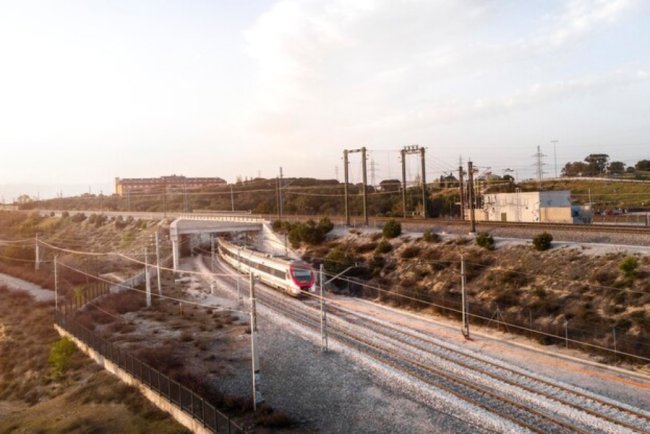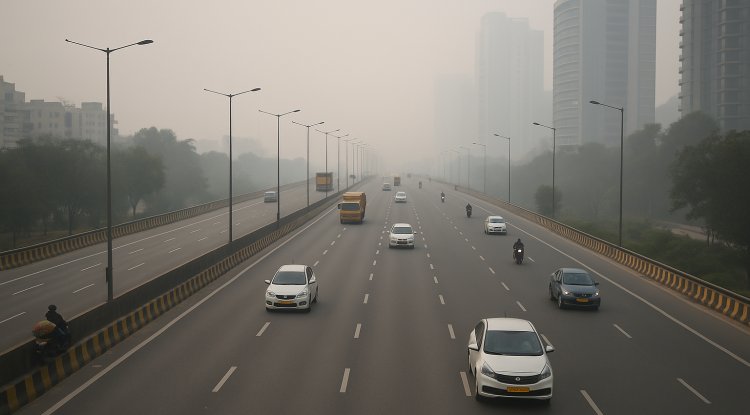Brick Pollution Fuels South Asia’s Climate Crisis
South Asia’s brick industry drives construction but causes severe pollution, health risks, and climate damage.

As South Asia is swept by a wave of urbanization, the continent is witnessing a record-breaking building boom. As increasingly more people stream into urban centres in search of employment and improved living standards, housing and infrastructure demands have skyrocketed. At the centre of this out-of-control urban expansion is the humble clay brick, one of the world's oldest and most widespread building materials. But although its innocuous-looking facade hides its impact, clay brick manufacture is having a humongous impact on the environment and human health.
South Asia alone is manufacturing almost one-quarter of all the world's bricks, World Bank statistics reveal. India alone makes a whopping 250 billion bricks annually, while Bangladesh produces 27 billion, followed by Pakistan and Nepal, which are also making significant contributions to the global number. China remains the world's biggest brick producer with more than 1 trillion made each year. South Asian bricks are largely headed for houses and factories—such buildings to accommodate a burgeoning population's needs. But what the government is shelling out in terms of environmental costs is staggering.
Brick production in South Asia generally involves the removal of clay from fertile topsoil, frequently from fields, hill slopes, and rivers. After it has been formed and dried, the bricks are then fired in furnaces—also called kilns—are fired on coal and biomass as primary fuels. In doing so, carbon dioxide is released into the atmosphere, together with fine particulate matter. The impacts on the environment are twofold: first, stripping away nutrient-dense topsoil reduces farm productivity, as noted in a 2018 study in Environmental Management; second, releases of pollutants associated with fossil fuel combustion in kilns contribute to both local air quality degradation and global climate change.
A study published in Nature in 2023 estimated that Indian brick kilns alone consume approximately 35 million tonnes of coal and 25 million tonnes of biomass annually. Such pollution has been associated with fatal respiratory conditions, such as chronic bronchitis. Kiln-generated air pollution is estimated to kill 55,000 people in India and 6,000 people in Bangladesh every year, as per the study by the World Bank. These figures underscore the urgency of remediating the hidden costs of brick manufacture in the region.
The impact of the brick industry on the environment needs to be viewed as part of the total contribution of the building industry towards global warming. Buildings—and their construction, heating, cooling, and energy consumption—are the source of approximately 37% of the greenhouse gas emissions annually, according to the United Nations Environment Programme. This involves a perception that renders the production of bricks a focal, yet overlooked, environmental concern.
Concrete blocks have been viewed as a suitable substitute for clay brick production. Composed of a combination of water, cement, sand, and gravel, concrete blocks are the most widely used building material in the world. In India, more modern building materials such as concrete blocks have approximately 25% of the market share. In other nations such as Bangladesh and Nepal, the uptake has been sluggish. Additionally, concrete is an environmentally unfriendly product. Concrete, the most critical binding material in cement, contributes about 7% of world carbon emissions, says the International Energy Agency in a report published in 2018.
Designers and ecologists in South Asia are promoting the utilization of nature-based and renewable materials like wood and bamboo for rural construction activities. These "green buildings" provide the possibility of lower carbon, but take-up has been deterred by increased cost, ignorance, and small size. Reducing the clinker—the most emission-intensive part of cement—and encouraging the recycling of concrete can also ease the environmental strain, experts think.
With such pressures facing them, South Asian countries are increasingly seeking cleaner technologies for brick-manufacturing. The most common method is the zigzag kiln, where bricks are laid in a zigzag fashion in an effort to maximize energy efficiency and ventilation. Over 90% of Bangladesh's traditional kilns have been replaced by this one already, the London-based International Growth Centre says. A new study in the journal Science reported that additional technical advancements to the zigzag kiln could save energy by over 10% per kiln.
Even more advanced innovations, like hybrid Hoffman kilns, are also sought after. Such kilns have the potential to use waste heat, reducing energy consumption by as much as half. But once more, price is the big hindrance. A hybrid Hoffman kiln is approximately 15 times more costly to build than the more environmentally degrading fixed chimney kilns, the World Bank reports.
In the face of all this progress, however, the shift toward sustainable brick-making remains slow and uneven across the region. Money, policy loopholes, and technical expertise shortages continue to undermine large-scale adoption of cleaner options. With the rate of construction in South Asia growing to accommodate urban housing demand, integrating development with sustainability will depend on ambitious policy initiatives, greater investment in green technology, and a change in popular attitudes toward sustainable construction.
While so, the unassuming clay brick—a symbol of growth—will continue to be a representation of an expanding environmental disaster.
What's Your Reaction?

















